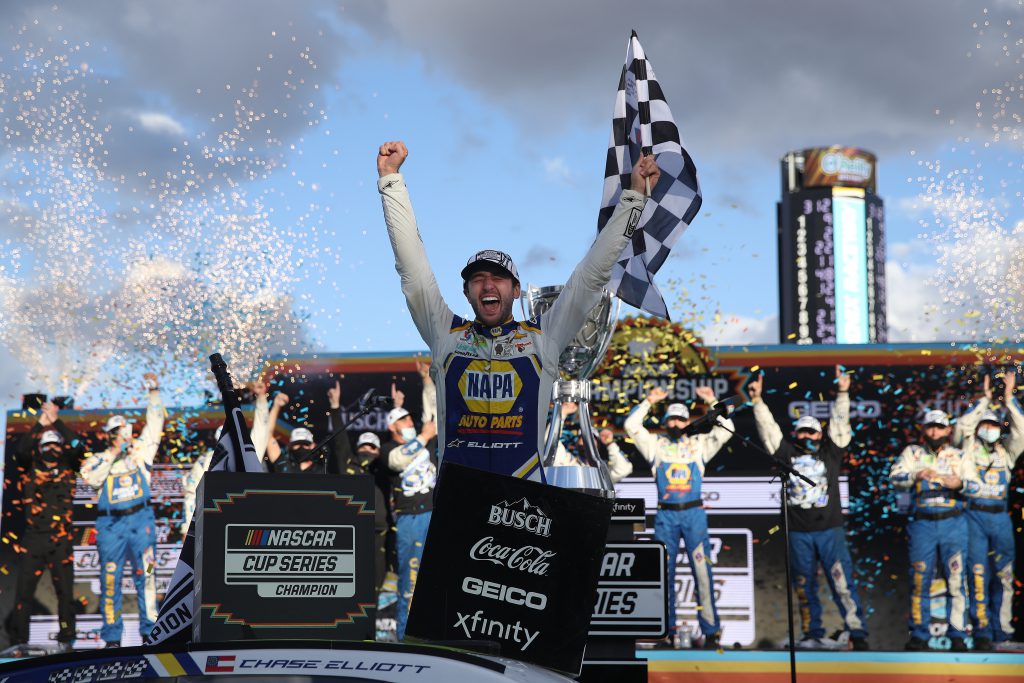Coronavirus has shaken up most top motorsports championships in 2020, but few have been as surprising, dramatic, emotional and nail-biting as the NASCAR Cup Series win by Chase Elliott on Sunday.
As one of the first sporting championships to return to action after lockdown – during which it ran an incredibly popular esports series – NASCAR not only had to contend with keeping its staff safe from coronavirus but also ended up taking a strong stance in a fight for equality.
While Kyle Larson’s racial slur set it back, the rigorous campaigning of Bubba Wallace with NASCAR’s backing has helped remove the Confederate Flag from its tracks and raise awareness.
The series also harnessed uncertainty into on-track innovation by removing practice and qualifying, and even managed to deliver a wet Cup Series race for the first time in the modern era.
Here’s our rundown of all the fireworks from a NASCAR year that won’t be forgotten quickly…
How the title was won

Elliott had three wins and 11 top fives in the last two seasons but couldn’t turn that into a spot in the final four fight for the championship in either year.
At Martinsville last week, Elliott had to win to have a chance of making that title four and he managed it.
That alleviated some of the pressure building on him to fight for a first title as heir apparent in the Hendrick team that has achieved so much historic success with Jeff Gordon and Jimmie Johnson.
It meant he joined Penske team-mates Joey Logano and Brad Keselowski alongside Joe Gibbs’ Denny Hamlin in the fight for honours at Phoenix, but the Martinsville win gave Elliott the momentum.
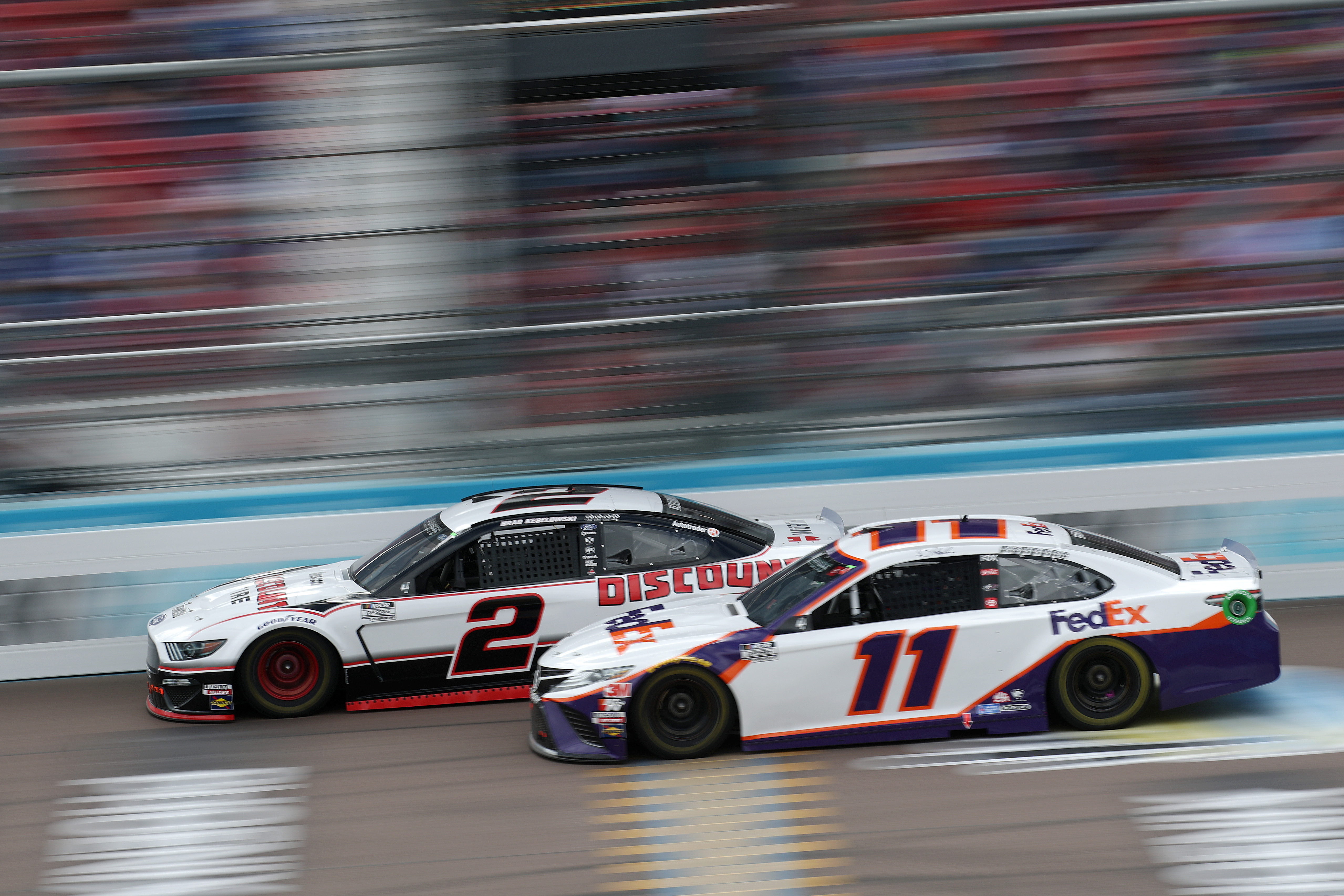
That momentum was kiboshed immediately as Elliott’s car failed post-race inspection and he had to start from the back.
It didn’t matter to Elliott, though. He was already into the top 10 after 30 laps and joined his fellow three championship contenders in hovering at the front for the whole race. Hamlin failed to lead a lap but the remaining title contenders combined to lead all but 18 of the 312 laps – most of those 18 being strategy related.
Keselowski was other ‘underdog’, and he followed Logano’s Stage 1 win by claiming Stage 2 with an audacious dive down the inside at Turn 3 on the last lap of the stanza to claim the lead and the momentum. It looked like he had the pace to fight for the win.
But his calamitous pit crew botched stop after stop. OK, not to a Keystone Cops level, but enough that he lost positions he’d made up on track and when it came down to the closing laps he was too far back to challenge.
Instead Logano led in the closing stages but a couple of tail-happy moments allowed Elliott to strike, taking the victory and becoming the third youngest title winner at 24. He also became part of the third father-son championship winning duo as his father Bill Elliott managed the feat in 1988.
It was also crew chief Alan Gustafson’s first title having failed with big names like Mark Martin and Gordon previously, and Hendrick’s 13th drivers’ championship.
Johnson – the last ride of the best ever?
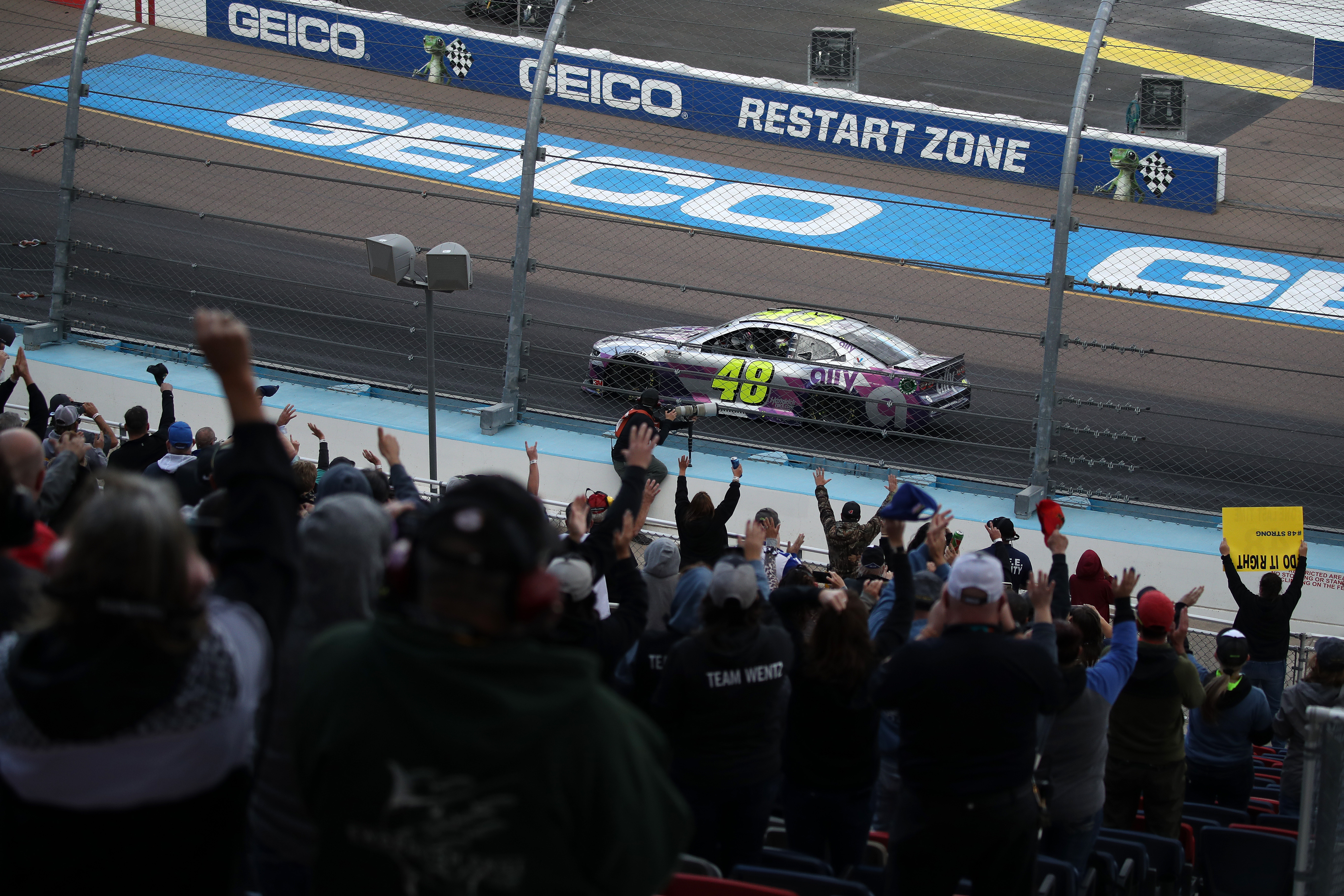
The final race of the season marked the unthinkable: Jimmie Johnson’s last NASCAR Cup Series start.
We’ve known for a while he was IndyCar bound but there’s just something a bit..wrong about Johnson not being in the Cup Series anymore. Even if he hasn’t won in three years and hasn’t been able to match his previous success recently.
In one of its most competitive eras he reeled off five straight titles and added two others to tie the record held by Richard Petty and Dale Earnhardt.
While both are legends from revered eras in the championship, you have to wonder if Johnson will go down as the all-time greatest given the level of competition from his rivals and the difficulty of the playoff format.
After 83 wins and 232 top five finishes, Johnson can be celebrated not only for his numbers, but for what he brought to the series.
He’s been a fierce but fair competitor, rarely in scuffles and always working to remove the stereotype that NASCAR drivers are not athletes.
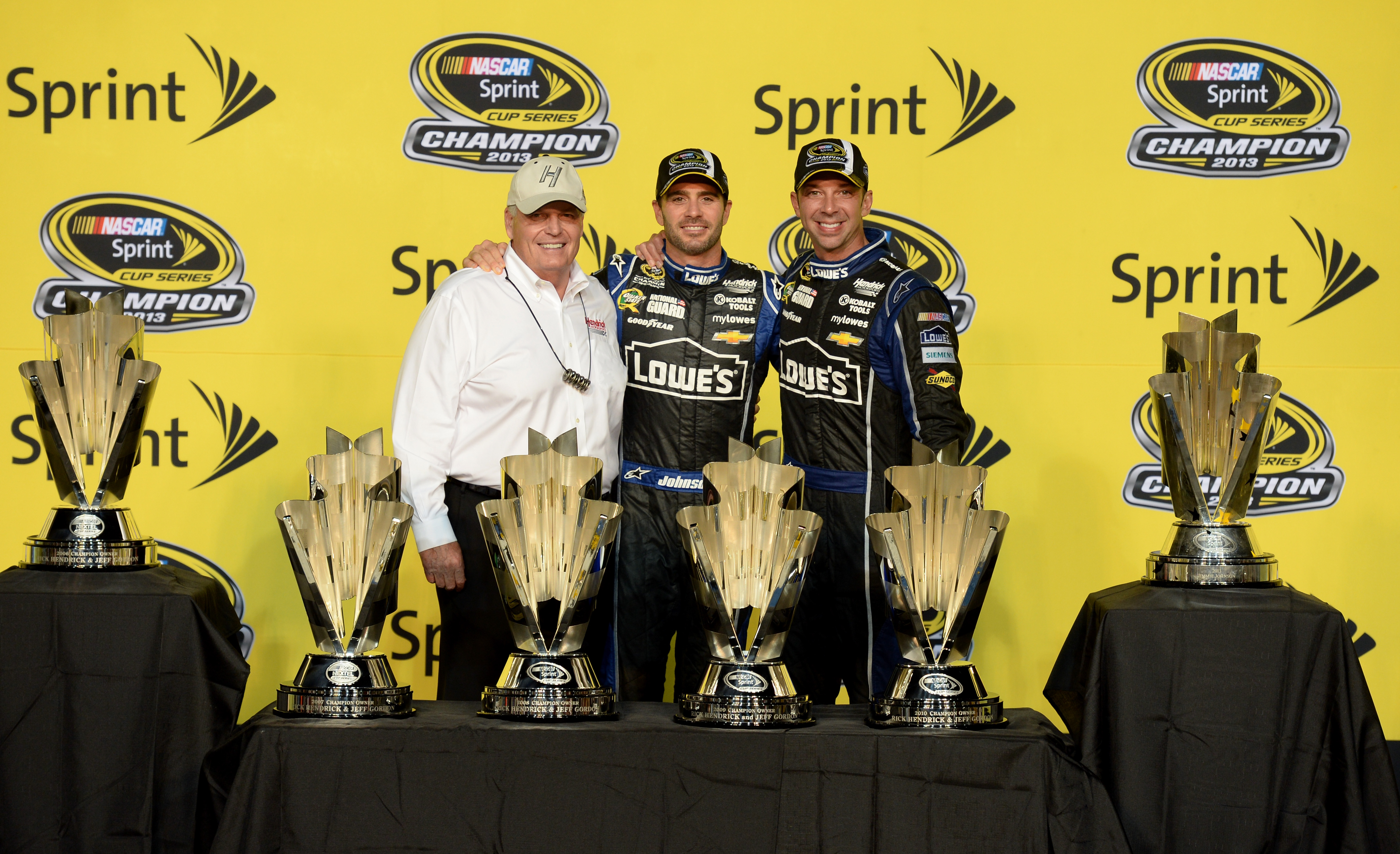
Along with him, the crew chief who masterminded his success is also moving on. Chad Knaus – paired with the #24 car and William Byron since 2019 – is taking a management role at the Hendrick team.
The 2012 Cup Series runner-up Clint Bowyer is taking his talents to the broadcast booth permanently after the Phoenix race, joining Fox Sports having starred in its coronavirus lockdown iRacing coverage. The Stewart-Haas driver finished 12th in the standings with a second place to his name.
Matt Kenseth – who took over the #42 car this season after Larson’s racial slur – is also returning to retirement having filled in admirably at Chip Ganassi Racing this year.
A pair of up and coming Xfinity drivers will replace Bowyer and Kenseth. Chase Briscoe narrowly missed out on the title and takes Bowyer’s seat as one of the most popular graduates in years. Ross Chastain takes over the Ganassi seat, while second-tier champion Austin Cindric will run a part-Cup Series schedule in 2021 ahead of a full-time Wood Brothers seat the following year.
NASCAR leads the path back to racing, and to equality
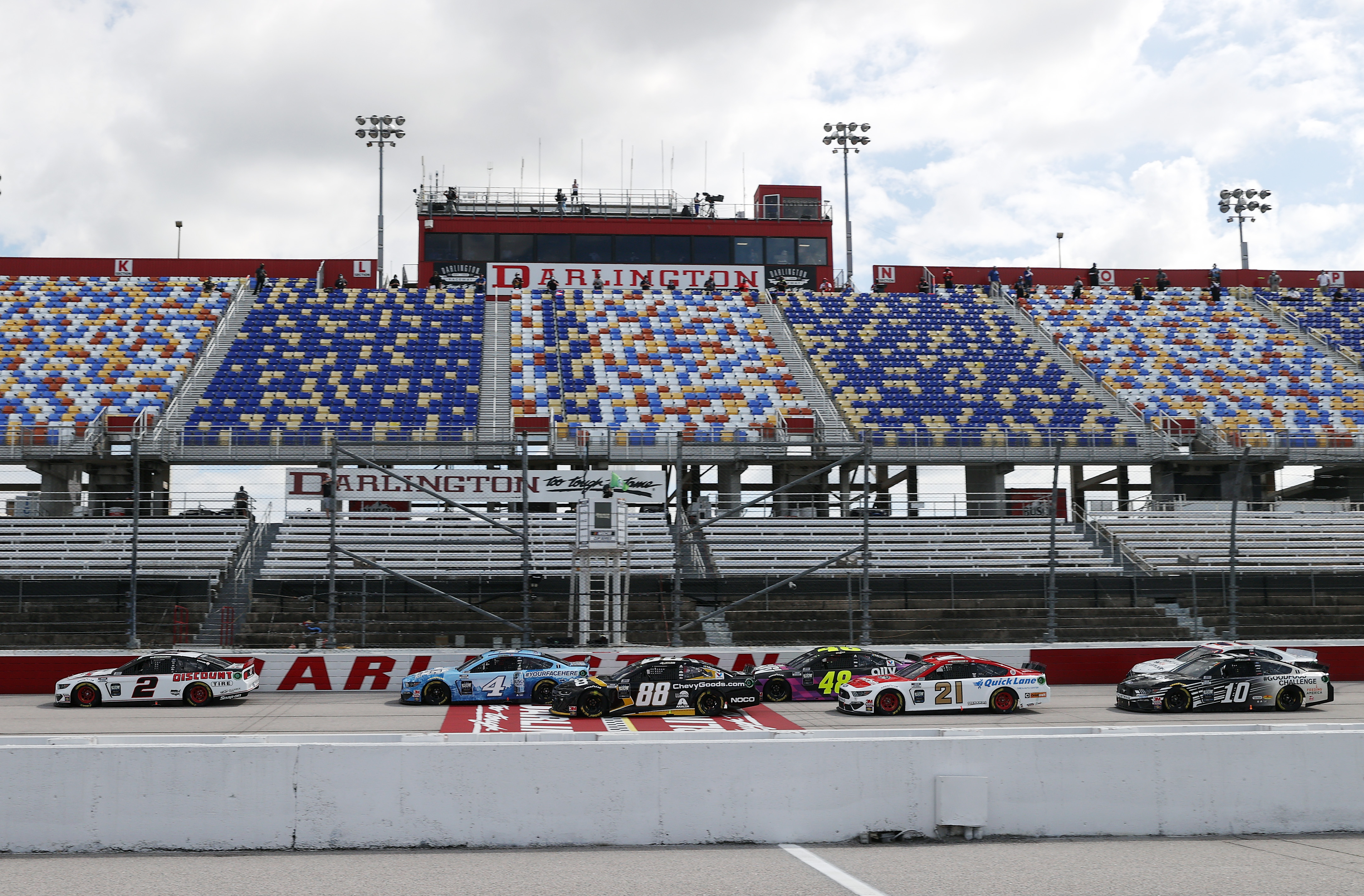
Never afraid to push boundaries, NASCAR returned to racing on May 17. Some of the country was still in lockdown and we were still learning about this new virus that would change the course of human history. But working with health experts, NASCAR was certain it could lead the path back to real world racing.
It had already starred during lockdown with the NASCAR Pro Invitational Series run on iRacing, which brought out almost the whole real-world grid to race on prime time television. Bringing NASCAR’s production budget and resources to esports coverage worked wonders and the series was brilliant.
Still, like any series, it needed to return to real-world racing quickly, and it did! With a Darlington-based schedule initially to limit travel, the series got straight down to business by resuming with lap one of racing – having binned off practice and qualifying!
This format of no practice helped to mix up the order, and fans and drivers alike loved the racing it produced. The series had a captive audience with no other major sport underway at that stage, and it did not let the newness of the virus scare it.
It managed to protect its teams and get racing going again, even laying a blueprint for other series to use and return, as IndyCar did.
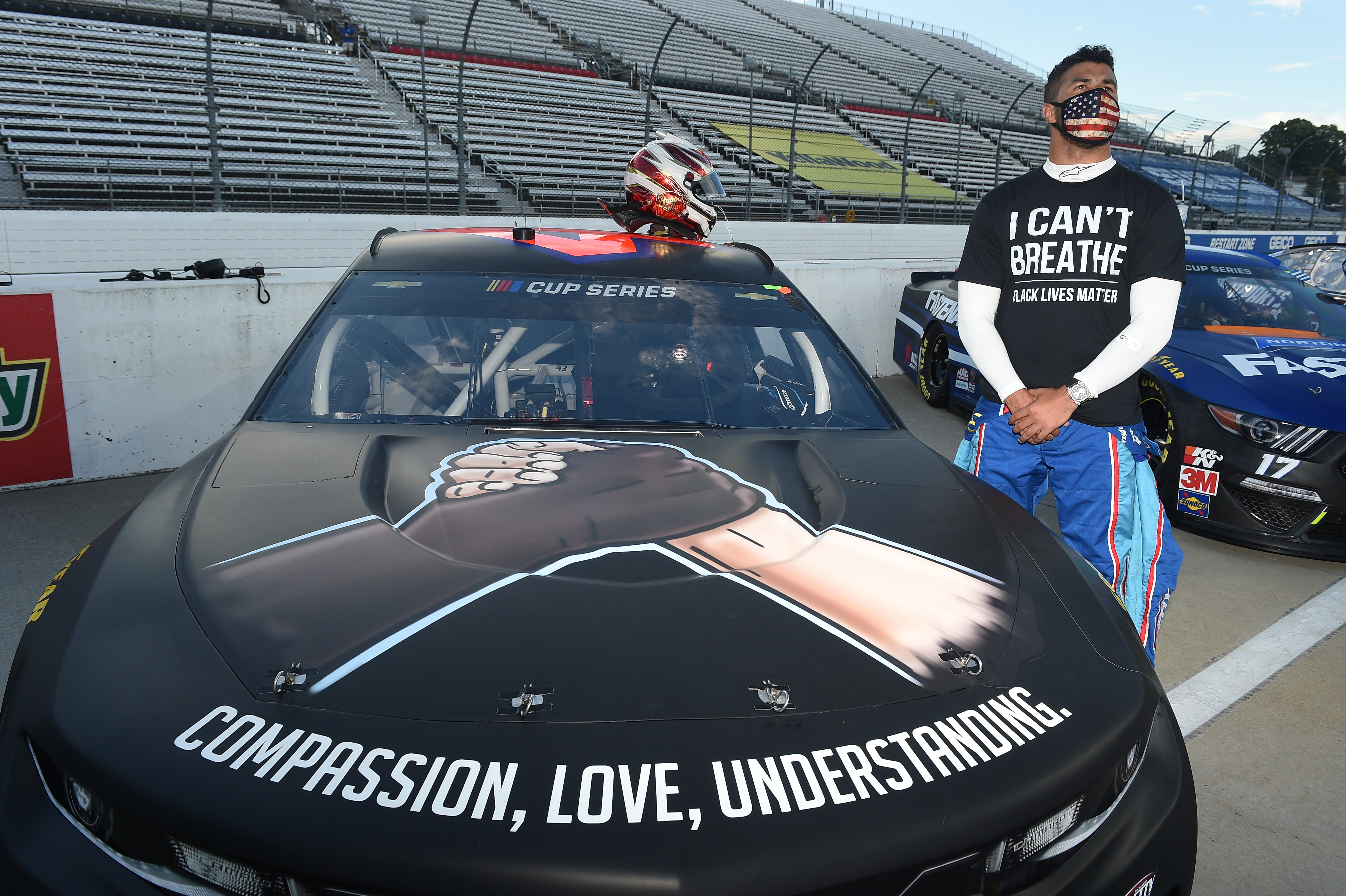
Not long after racing’s return, the ripples of George Floyd’s death at the hands of the Minnesota police sent shockwaves through American society and Bubba Wallace – the series’ only African American driver – began to campaign for social equality, hard. NASCAR backed him all the way, allowing him to run a Black Lives Matter livery on his car and wear a T-shirt with the same slogan.
NASCAR also banned the Confederate Flag – popular among some in its southern heartland – which is something even some government departments are yet to do despite its connection to slavery.
When it was thought a noose had been hung with malice in Wallace’s garage at Talladega, the whole grid of drivers pushed and walked behind Wallace’s car before the race in a vivid show of support behind their friend and driver. An FBI and NASCAR investigation ultimately showed the situation had – thankfully – not been as it first appeared.
After a noose was found in his garage stall last night, @NASCAR drivers show their support for @BubbaWallace at Talladega. #IStandWIthBubba pic.twitter.com/uFlxmP27qa
— FOX Sports (@FOXSports) June 22, 2020
Wallace and NASCAR’s campaigning has tailed off slightly in the mainstream media more recently as the season arrived at a climax, but both have shown a willingness to speak out and make tough decisions in the future – even if those decisions might cost them fans.
Wallace’s actions has allowed him to attract a number of new sponsors, and he will join a new team next year formed by Hamlin and Basketball legend Michael Jordan.
No practice and a Daytona surprise
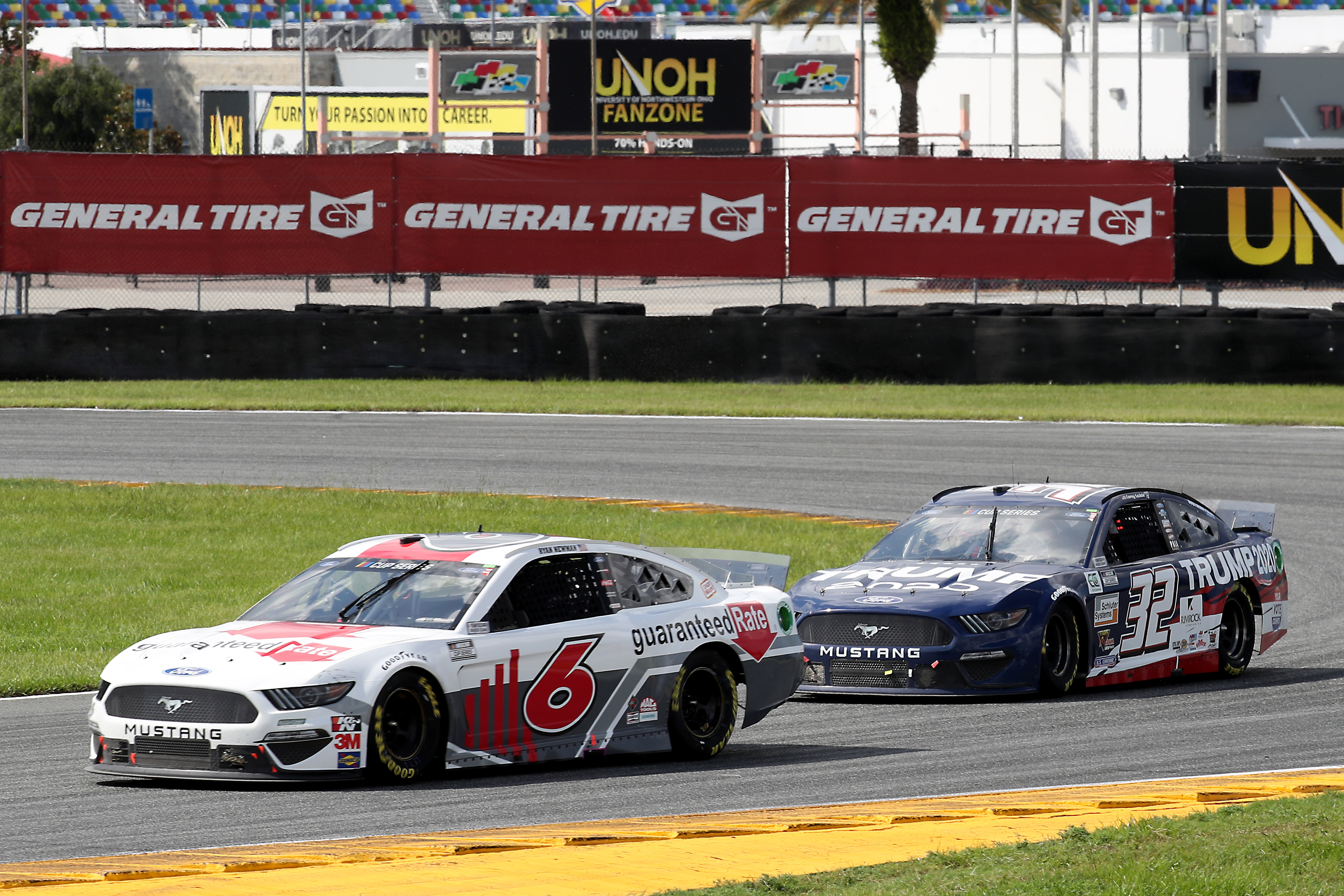
People thought NASCAR was mad when the series returned at Darlington and eschewed practice and qualifying just to race.
If that wasn’t enough, it threw in the Daytona road course for a Cup Series debut in August, but again without any reconnaissance! The first time the drivers would contest this track would be on lap one, at a road course!
Hamlin and Kyle Busch were the early stars of that race, but Hendrick Motorsports’ prodigious road course pace soon came to the fore and Elliott won the race from a charging Hamlin in the closing stages.
The move to not practice or qualify was a controversial one but if any series can do it, NASCAR can. It already prioritises entertainment over what some would call a more pure form of championship.
Plus, these drivers are the elite, the best in the business. They should be able to handle the challenge of coming to a new track and learning where the grip and braking points are. There’s no added safety risk as long as the drivers take the race seriously and any elite sportsperson should.
It was another example of NASCAR handling the uncertainty coronavirus had given it and repackaging that into an entertaining formula.
Championship format questioned again
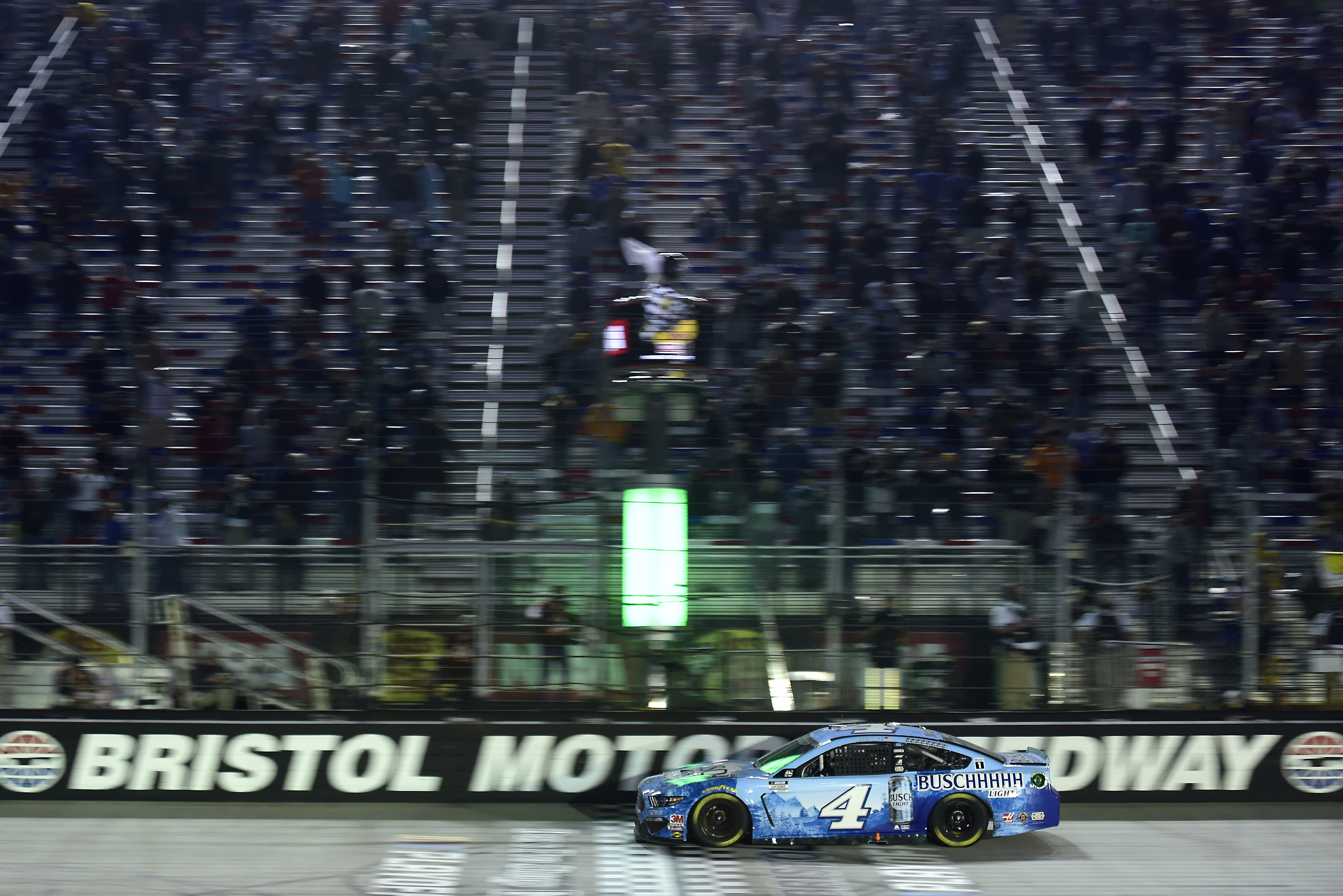
NASCAR’s playoff system has long been contentious. For as long as the playoff scenario exists, fans will work out what the points would have been in a normal championship formula and use that to prove why someone else deserved to win.
However, it’s so much more complicated than that. In the current system, drivers who score one win earlier in the season are all but guaranteed a playoff place, so are able to approach remaining races under less pressure and often win more. Others have to work for that first win and take big strategy risks or bring a riskily designed car for the weekend which doesn’t always pay off.
Ultimately, this year’s grumblings were brought about by Kevin Harvick failing to make the final four to fight for the championship after taking nine wins in the season. He was the dominant standout after the series returned following the coronavirus outbreak.
But when it came down to the playoffs, he struggled and Elliott’s win at Martinsville raced him in and knocked Harvick out.
Pure racing fans will look at Harvick’s season and bemoan him failing to win the title. Others can look and say that Elliott won a must-win race to get into contention and then came from the back of the grid to win the season finale for the title. Talk about performing well under pressure.
It’s happened before – Jeff Gordon won 10 races and finished second in 1996 – but the start of the current system was really brought about by fan reaction when Matt Kenseth won the 2003 title with only one race victory. The playoffs came in for 2005 and have remained – tweaked – ever since.
Ultimately, you could win every race of the regular season and not make the championship four now. So while Harvick’s regular season stats were impressive, Elliott was playing a different game. One that won him a championship given the rule book he played to.
Slurring Larson fired, hired
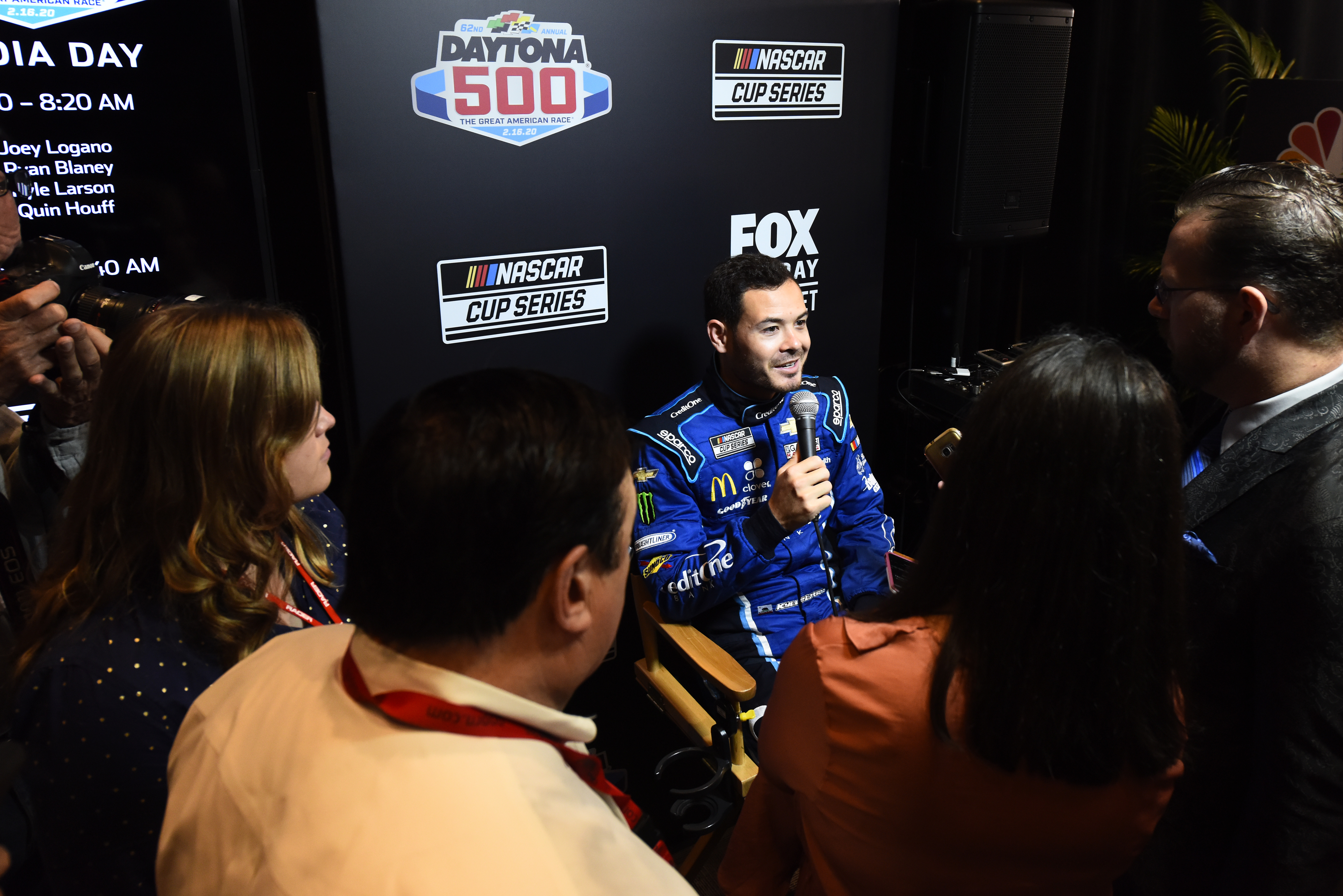
Real-world drivers were just beginning to learn the benefits of competing in esports during the lockdown period, when first Larson and then Daniel Abt proved why it must also be taken seriously and could prove to be career ending if not.
After a racial slur in a non-NASCAR organised esports race – on the Monza oval of all places – Larson lost his sponsors, his Chip Ganassi Racing drive and was suspended by NASCAR.
He retreated into the shadows to race on dirt full time – delivering one of the most spectacular short-oval seasons in recent memory, it’s worth adding – before completing his sensitivity training and doing so much more behind the scenes to attempt to reconcile what he had done.
His full and frank apology and description of what happened since was criticised by a few for its timing – convenient in its emergence just as the silly season in NASCAR for next season heated up.
Ultimately when the musical chairs stopped, one of NASCAR’s most promising prospects had gone from future champion, to reputation in tatters, to given another chance by the reigning championship winning team. He’ll join an incredibly formidable line-up of young drivers at Hendrick with Elliott, Byron and Alex Bowman.
Whether you think he deserves another chance is a matter of opinion. His return was overwhelmingly received by the paddock and few, if any, believe Larson to be malicious.
A Cup race, IN THE WET!

For years NASCAR fans have been limited to watching the second-tier Xfinity Series or lower forms of NASCAR racing for a taste of action in the wet. However, a rule change for 2015 allowed for rain tyres on road courses and five years later, the opportunity finally came at this year’s Charlotte Roval race, which fell during the playoffs on October 11.
It was yet another leap into the 2020 unknown for most of the drivers who hadn’t ever raced in the wet – at least in NASCAR. Similar to racing at Daytona for the first time with no practice earlier in the year, it was different in the fact that it was the round of 12 elimination race in the playoffs.
Despite the adversity, most of the drivers handled it with the skill and sensibility of elite sportspeople.
And ultimately the result was the same. Elliott won the 2019 Roval race for Hendrick Motorsports and did the same again, albeit not after crashing like he did the year before en route to victory! After Daytona it was his second road course win of the season.
But Elliott only emerged up front late on as the track dried, and the conditions did thrust some usual strugglers into contention at the front of the order.
While we have no idea how soon again we’ll have a wet NASCAR Cup Series race, most will hope it’s soon as regardless of the result, seeing these drivers manhandle the cars in tricky conditions including using an element of banking in the wet, was truly extraordinary.


